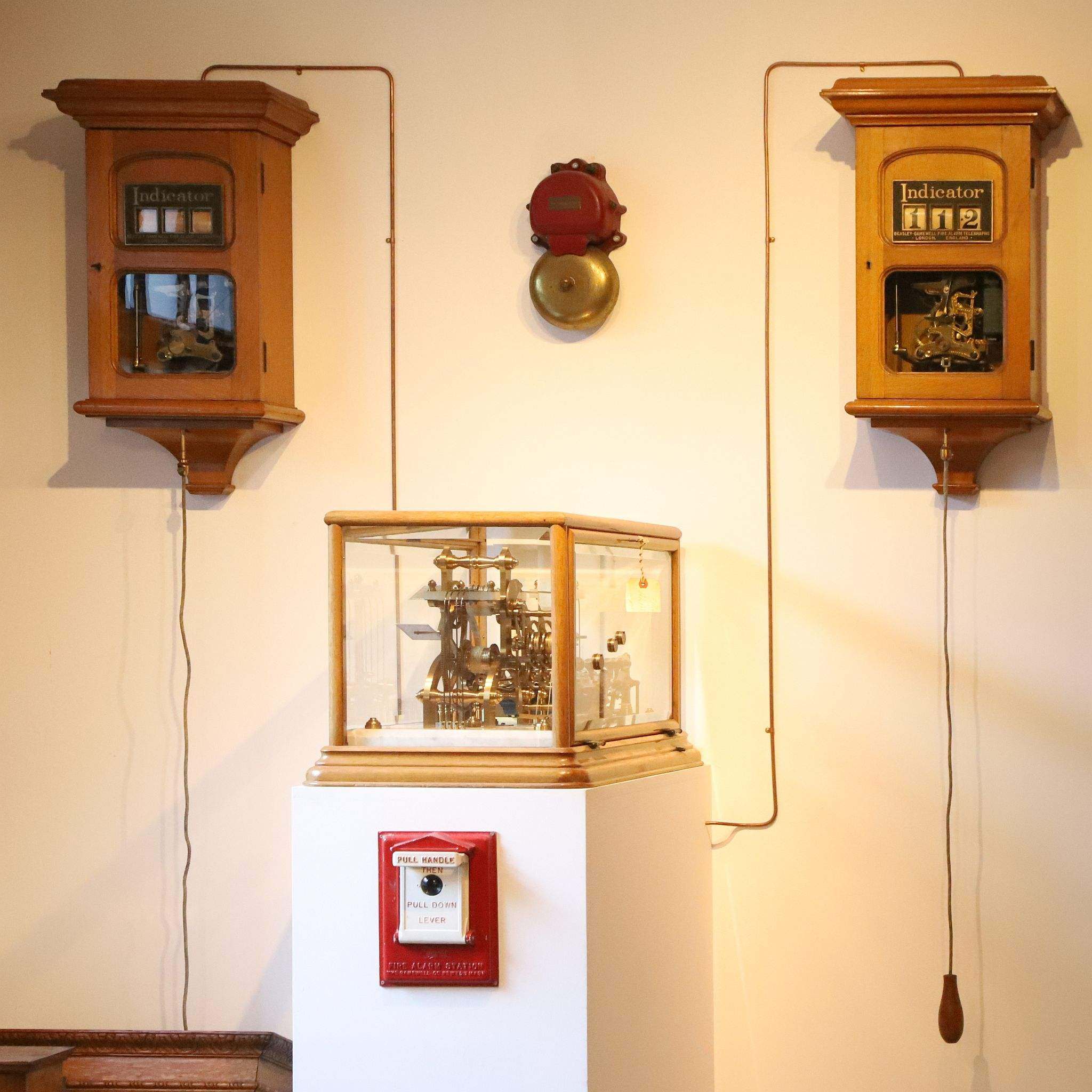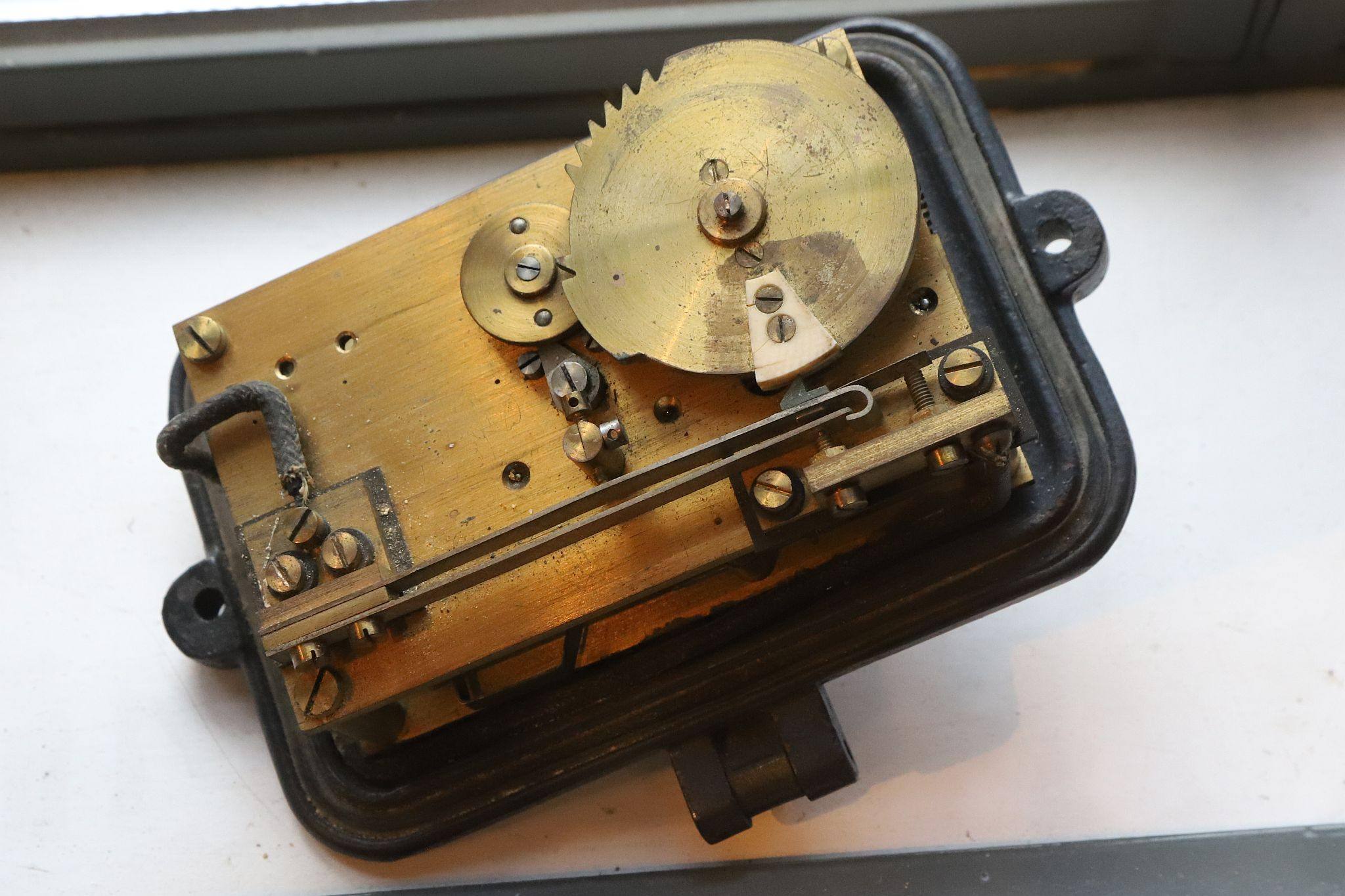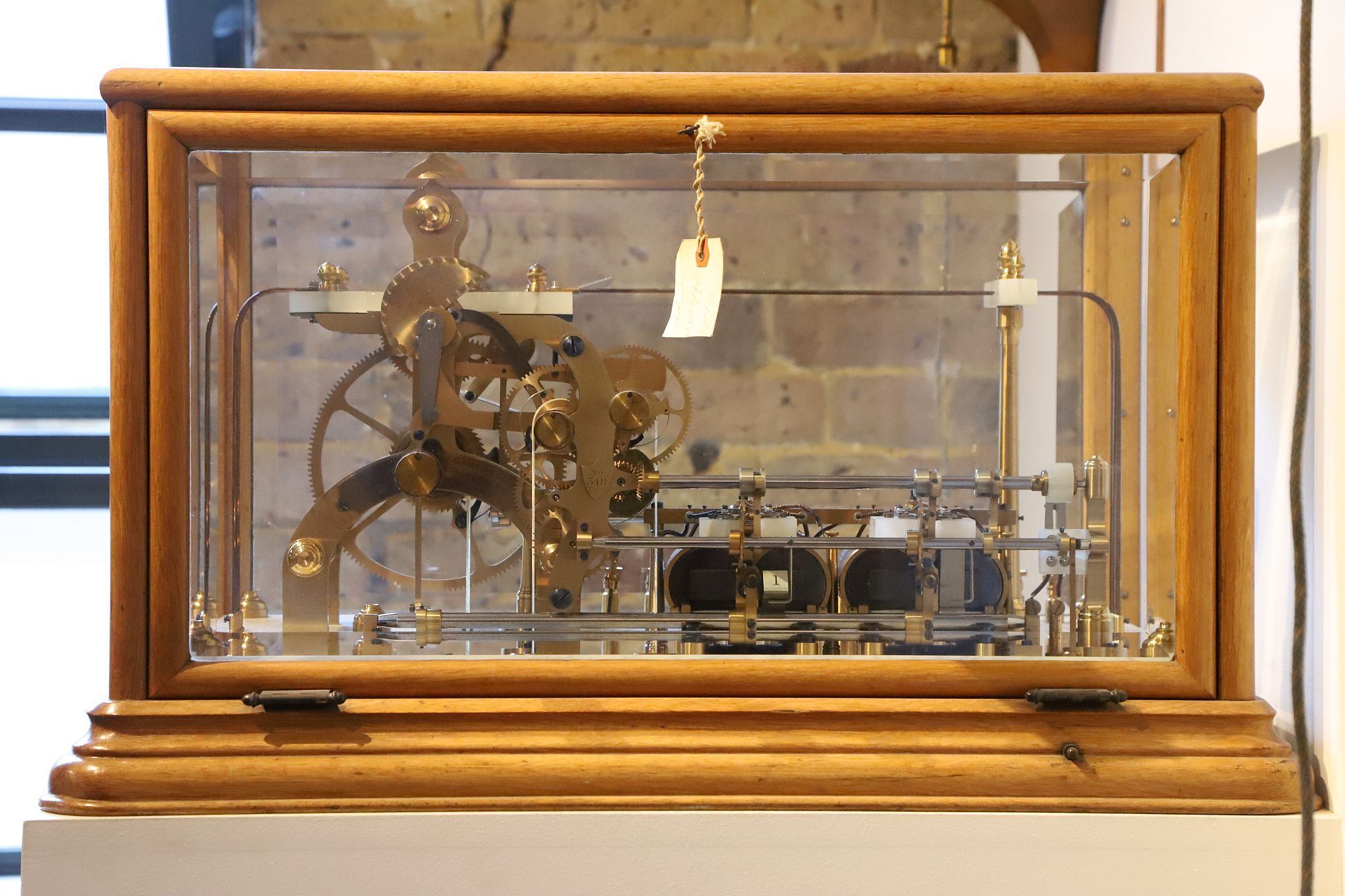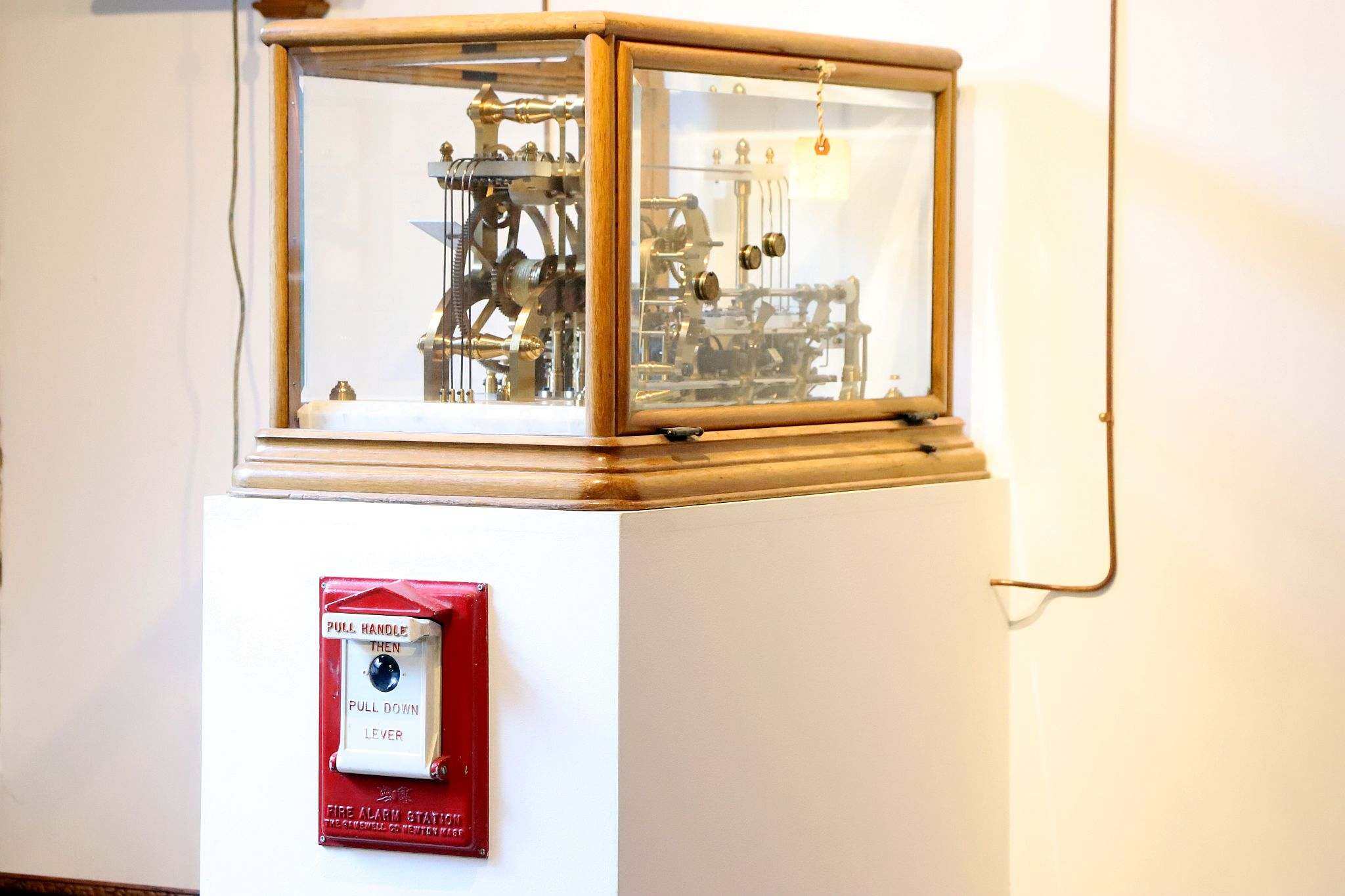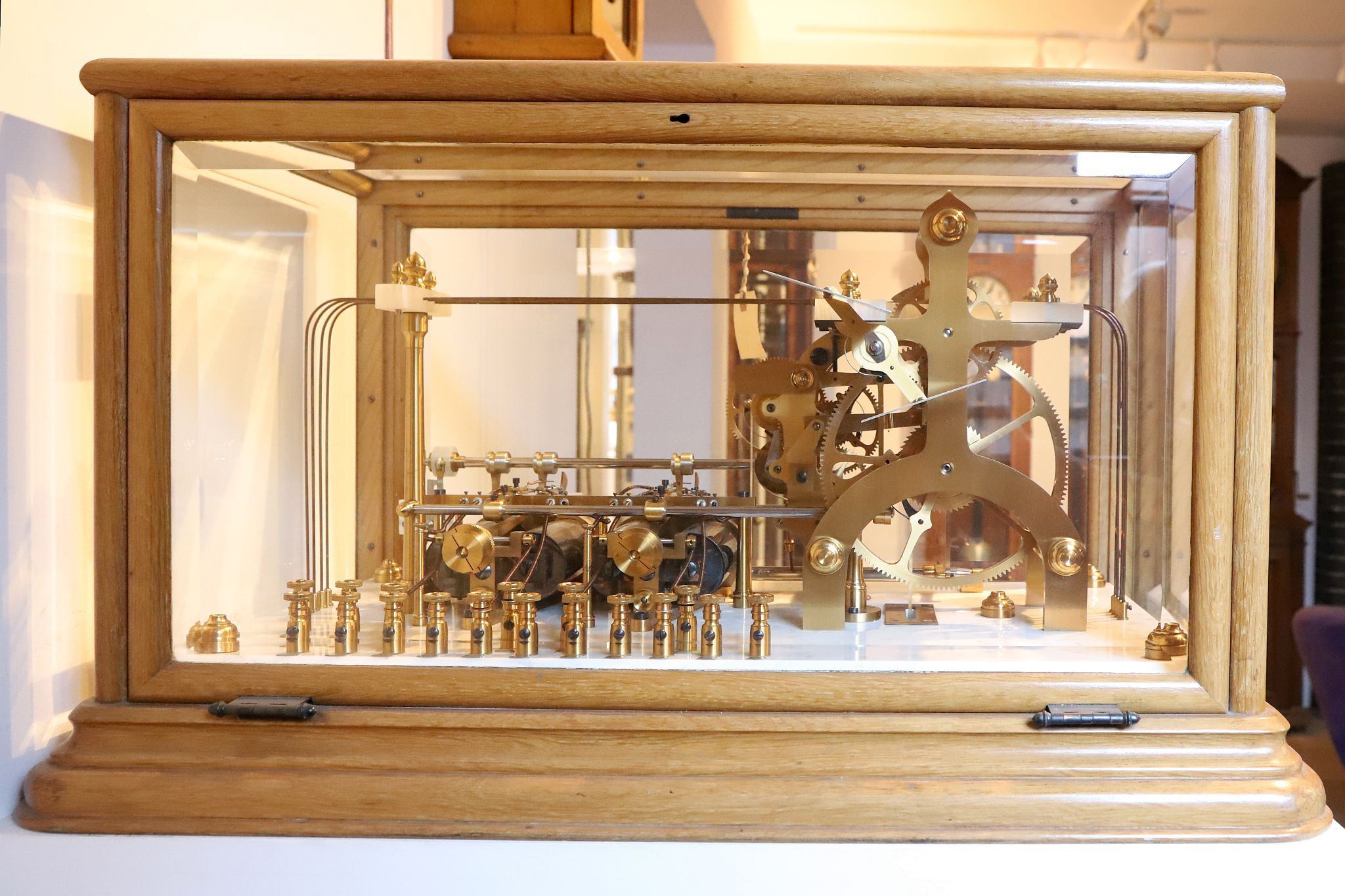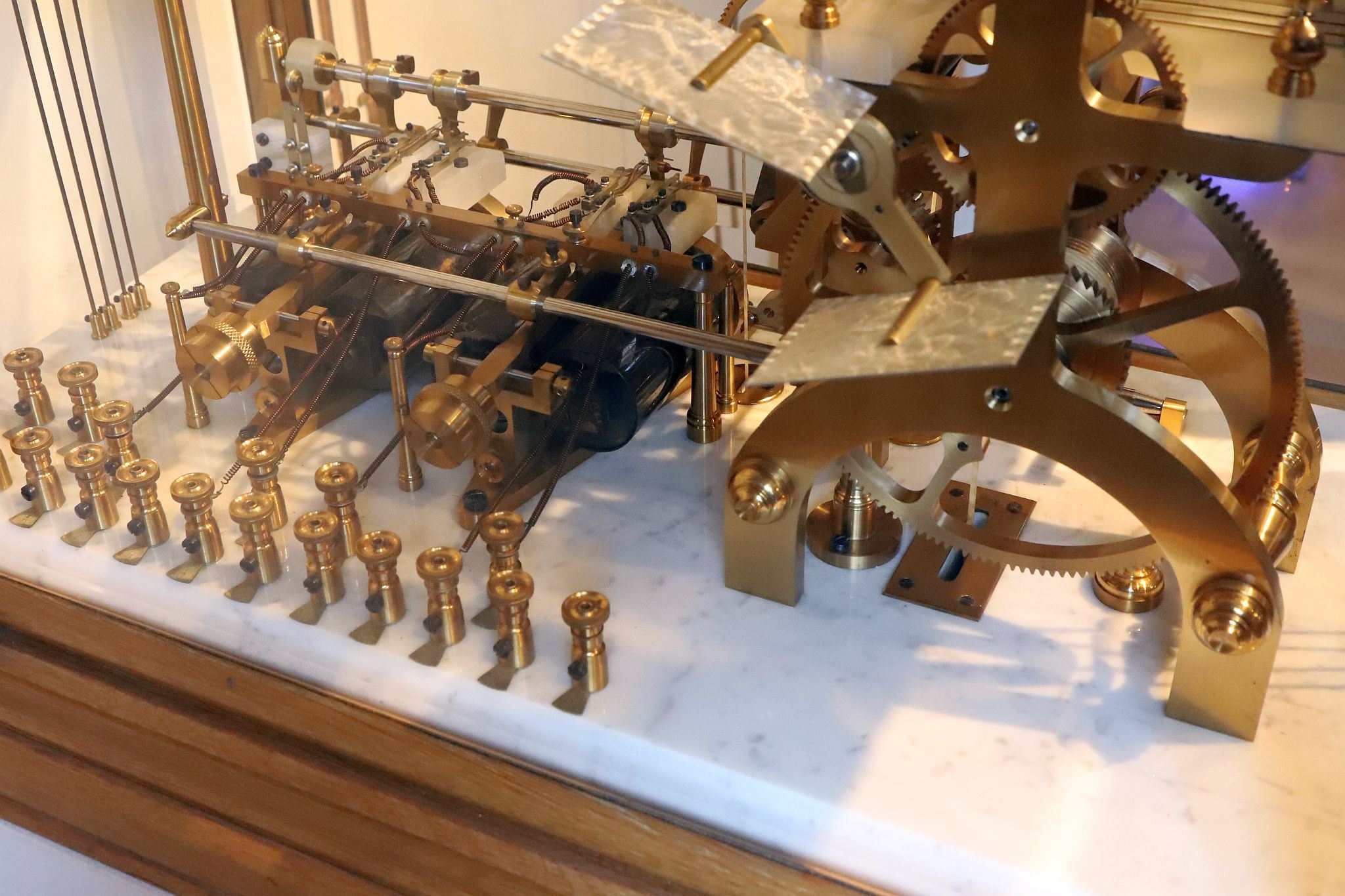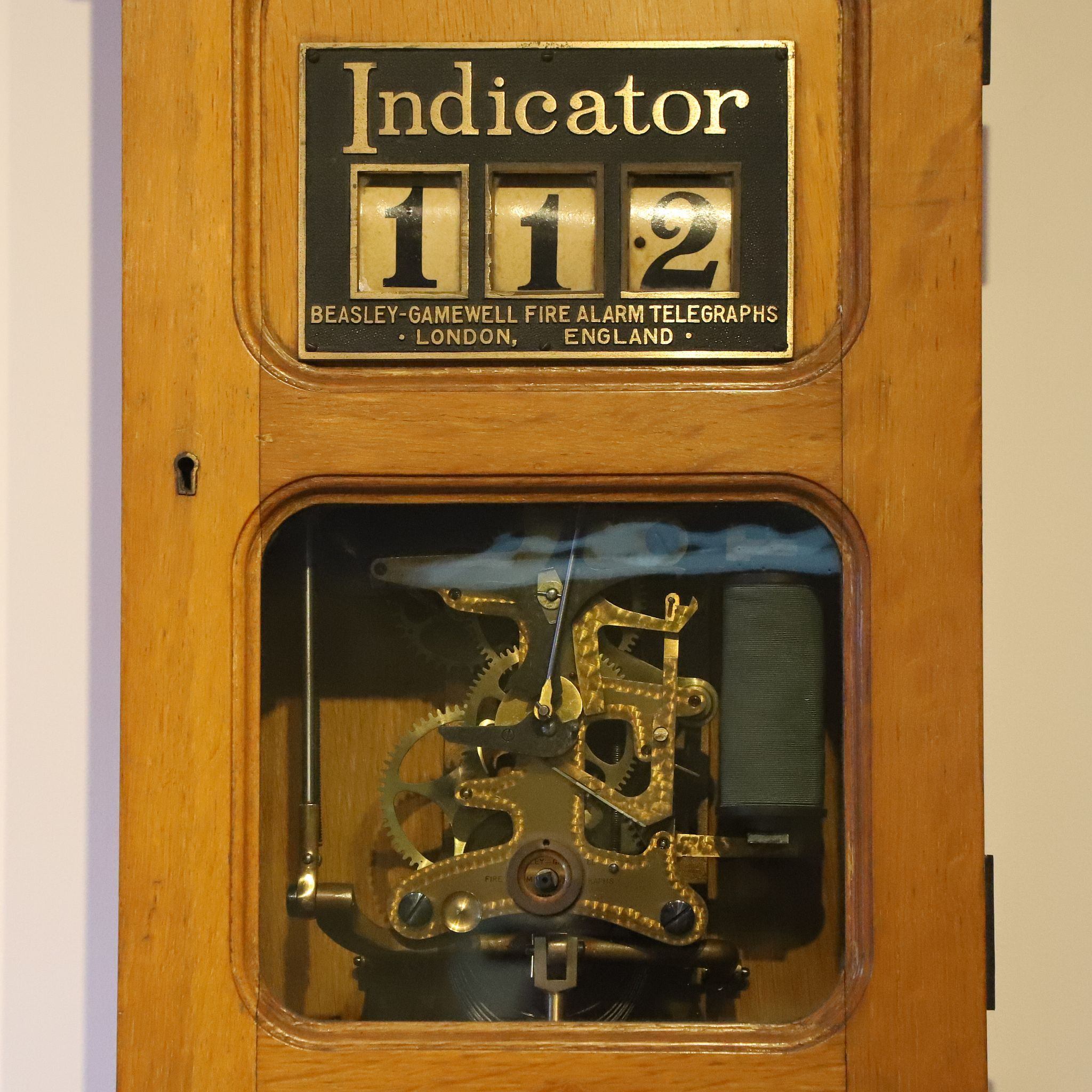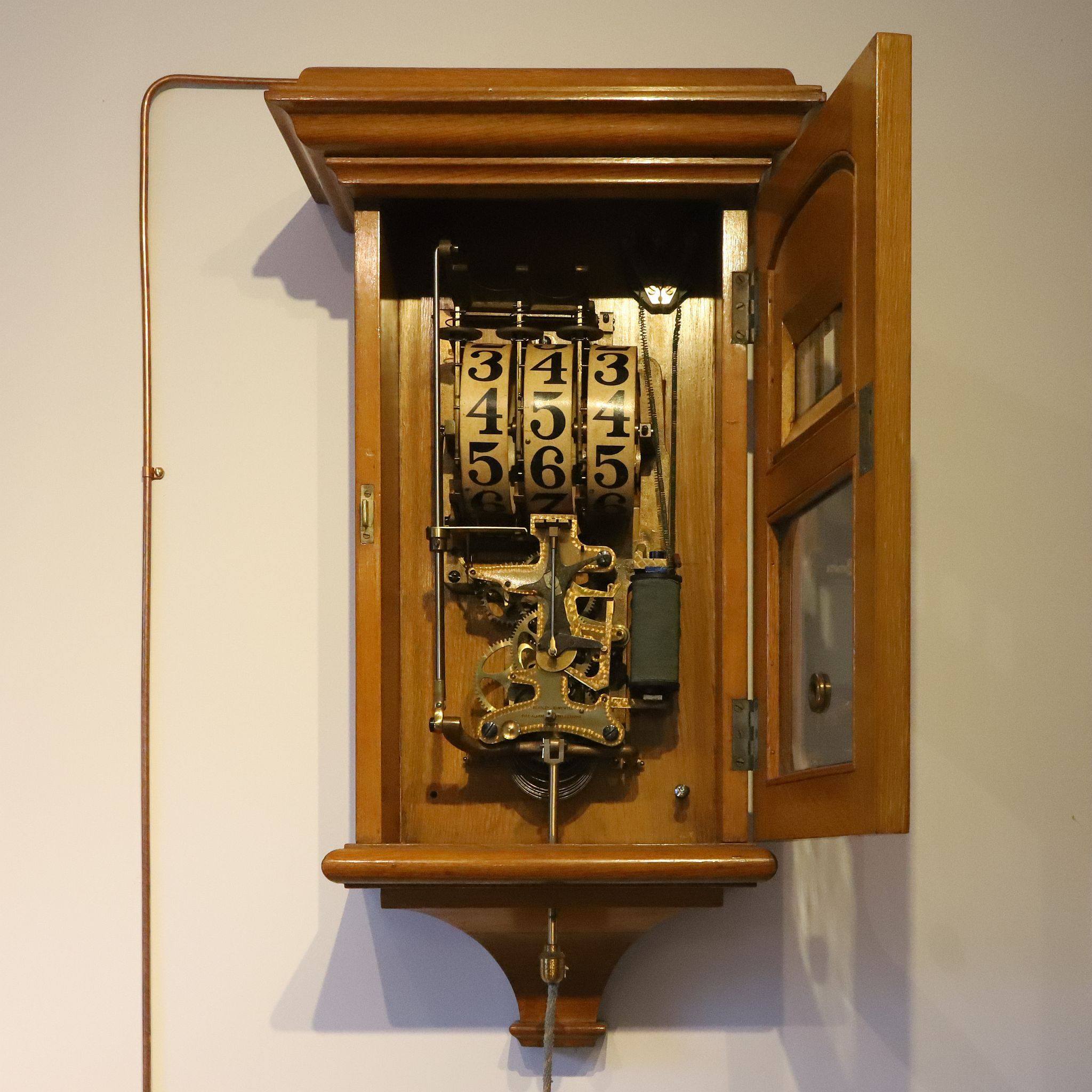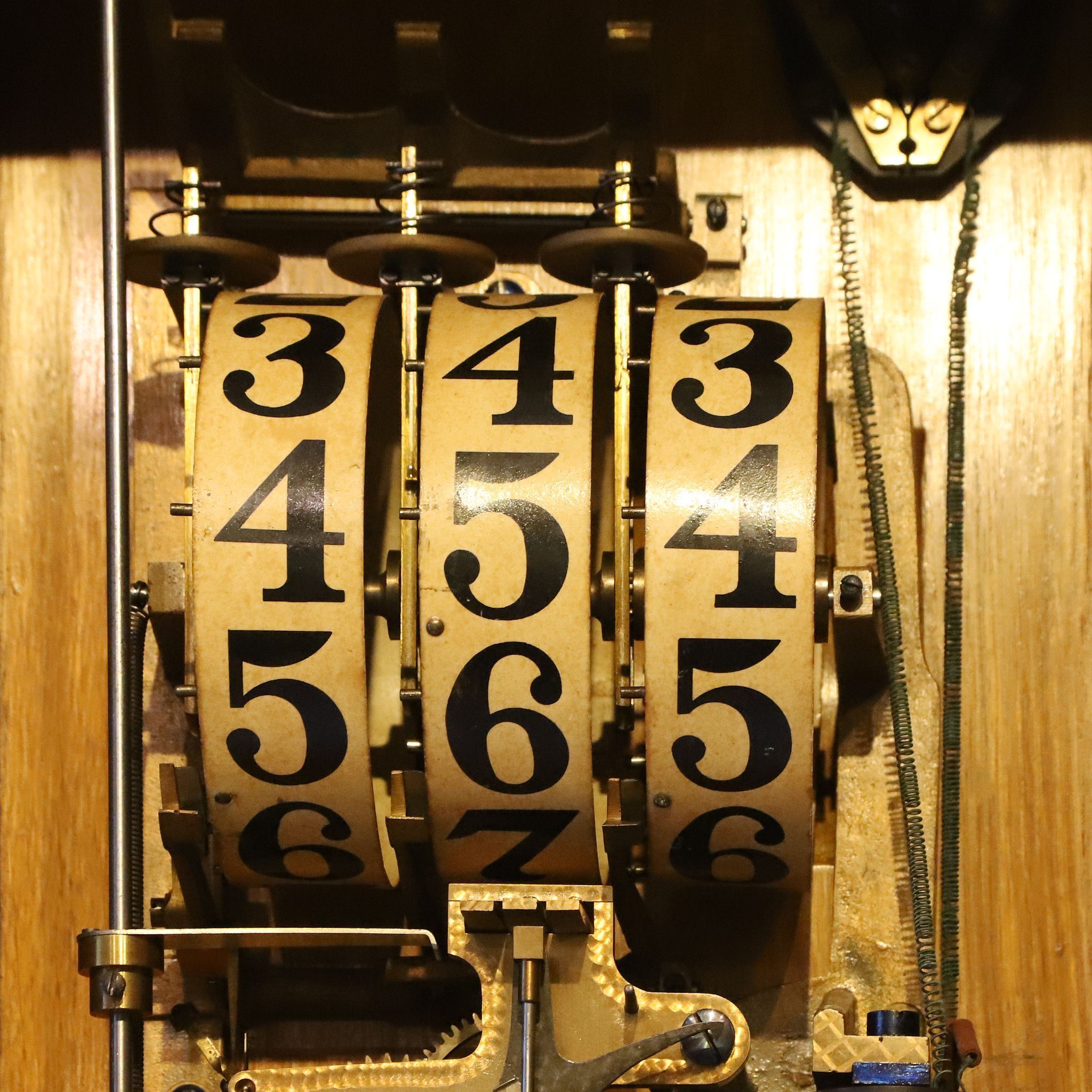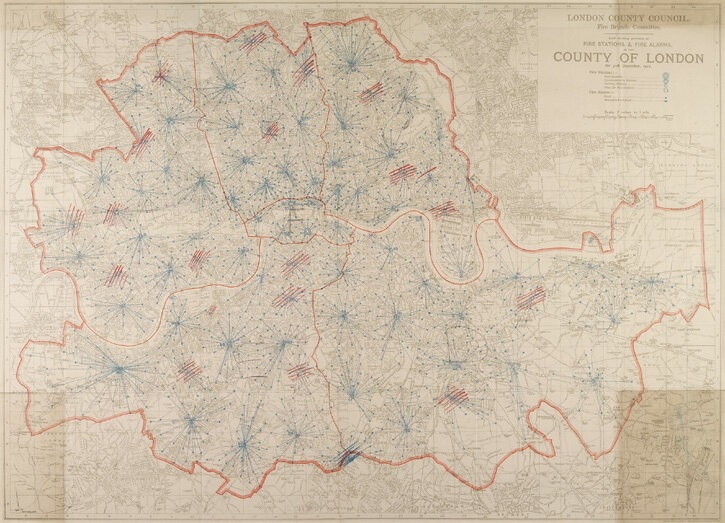Clockworks Museum – Early Fire Alarm System
The Clockworks in South London is a real gem of a museum, but what really caught my eye was the working Beasley-Gamewell Fire Alarm system.
In the days before telephones, the Beasley Gamewell telegraph alarm system was used by Fire Brigades and Police forces for their street alarms. In an emergency, the handle on the street alarm could be pulled to alert the Fire Brigade or Police depending on who operated that particular street alarm. The alarm handle in the photo is from America.
There was also an automatic fire alarm for buildings which used a bimetallic strip to react to sudden heat changes and activate the clockwork mechanism.
The notches on the alarm’s wheel were unique to each alarm and caused electrical impulses to pass down the telegraph line to the Control Room. The Control Room had a record of all the numbers and the streets and/or buildings they corresponded to.
The receiving equipment (in the wood and glass case) received the pulses.
The pulses were then repeated to the number board which them converted them into numbers on the display board.
Those numbers showed which alarm had activated. Once the number had been noted, the rope was pulled to set the numbers to zero again ready for the next alert and the fire engines dispatched to the activated alarm.
This alarm was bought in a Bonhams auction which dated it to around 1890. The alarm was conserved by a clockmaker and is in working order. One possibility for the survival of this example is that it was an exhibition example.
The Metropolitan Fire Brigade, later London Fire Brigade, certainly had a street alarm system as shown in the map below from the London Metropolitan Archives, which was connected to the local fire station.
What’s not clear is if specific high risk/value buildings in London had dedicated alarms and if it was the Beasley-Gamewell system that was used by London.
